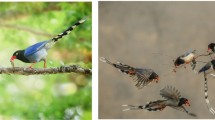Abstract
The purpose of this paper is to present a new path-planning algorithm for planetary exploration rovers that will guide the vehicle safely to a reachable state. In particular, this work will make use of a special class of artificial potential functions called navigation functions which are guaranteed to be free of local minimum. The construction of the navigation functions in this work is motivated by the grid-based wavefront expansion method but differs in that the contour levels are defined in terms of the control effort of the system. Two new methods will be introduced in this paper for defining the navigation function. The first method will generate a minimum control effort path plan and the second method will be based on an inverse dynamics approach. Each of the control effort based methods will generate a path plan that will guide the rover’s approach towards an objective reachable state. Finally, a stable backstepping-like controller is implemented to track a trajectory defined along the path plan to the rover’s objective.













Similar content being viewed by others
References
Huntsberger, T., Aghazarian, H., Cheng, Y., Baumgartner, E.T., Tunstel, E., Leger, C., Trebi-Ollennu, A., Schenker, P.S.: Rover autonomy for long range navigation and science data acquisition on planetary surfaces. In: IEEE International Conference on Robotics and Automation, 2002, ICRA’02, vol. 3, pp. 3161–3168. IEEE (2002)
Quadrelli, M.B., Wood, L.J., Riedel, J.E., McHenry, M.C., Aung, M.M., Cangahuala, L.A., Volpe, R.A., Beauchamp, P.M., Cutts, J.A.: Guidance, navigation, and control technology assessment for future planetary science missions. J. Guid. Control. Dyn. 38(7), 1165–1186 (2015)
Ono, M., Fuchs, T.J., Steffy, A., Maimone, M., Yen, J.: Risk-aware planetary rover operation: Autonomous terrain classification and path planning. In: Aerospace Conference, 2015 IEEE, pp. 1–10. IEEE (2015)
Lavin, A.: Optimized mission planning for planetary exploration rovers. arXiv:1511.00195 (2015)
Lavalle, S.M.: Rapidly-exploring random trees: A new tool for path planning. Iowa State University, Technical report (1998)
LaValle, S.M., Kuffner, J.J. Jr: Randomized kinodynamic planning. Int. J. Robot. Res. 20(5), 378–400 (2001)
Karaman, S., Frazzoli, E.: Incremental sampling-based algorithms for optimal motion planning. Robotics Science and Systems VI, 104 (2010)
Hsu, D., Kindel, R., Latombe, J.-C., Rock, S.: Randomized kinodynamic motion planning with moving obstacles. Int. J. Robot. Res. 21(3), 233–255 (2002)
Khatib, O.: Realt-time obstacle avoidance for manipulators and mobile robots. Int. J. Robot. Res. 5(1), 90–98 (1986)
Latombe, J.-C.: Robot Motion Planning, vol. 124. Springer Science & Business Media, Boston (2012)
Barraquand, J., Langlois, B., Latombe, J.-C.: Numerical potential field techniques for robot path planning. IEEE Trans. Syst. Man Cybern. 22(2), 224–241 (1992)
Rimon, E., Koditschek, D.E.: Exact robot navigation using artificial potential functions. IEEE Trans. Robot. Autom. 8(5), 501–517 (1992)
Filippidis, I., Kyriakopoulos, K.J.: Adjustable navigation functions for unknown sphere worlds. In: 50th IEEE Conference on Decision and Control and European Control Conference (CDC-ECC), pp. 4276–4281. IEEE (2011)
Horowitz, M.B., Burdick, J.W.: Optimal navigation functions for nonlinear stochastic systems. In: IEEE/RSJ International Conference on Intelligent Robots and Systems (IROS 2014), pp. 224–231. IEEE (2014)
Connolly, C.I., Burns, J.B., Weiss, R.: Path planning using laplace’s equation. In: IEEE International Conference on Robotics and Automation, pp. 2102–2106. IEEE (1990)
Masoud, A.A., Bayoumi, M.M.: Robot navigation using the vector potential approach. In: IEEE International Conference on Robotics and Automation, 1993. Proceedings, pp. 805–811. IEEE (1993)
Garrido, S., Moreno, L., Blanco, D., Martin, F.: Smooth path planning for non-holonomic robots using fast marching. In: IEEE International Conference on Mechatronics, ICM 2009, pp. 1–6. IEEE (2009)
Ralli, E., Hirzinger, G.: Fast path planning for robot manipulators using numerical potential fields in the configuration space. In: Proceedings of the IEEE/RSJ/GI International Conference on Intelligent Robots and Systems’ 94.’Advanced Robotic Systems and the Real World’, IROS’94, vol. 3, pp. 1922–1929. IEEE (1994)
Wang, Y., Cao, W.: A global path planning method for mobile robot based on a three-dimensional-like map. Robotica 32(4), 611–624 (2014)
Brock, O.: Generating Robot Motion: The integration of planning and execution. PhD thesis. Stanford University, Stanford (2000). AAI9961867
Lewis, F.L., Vrabie, D., Syrmos, V.L.: Optimal Control. Wiley (2012)
Slotine, J.-J.E., Li, W.: Applied Nonlinear Control, vol. 199. Prentice Hall, Englewood Cliffs (1991)
Krstic, M., Kokotovic, P.V., Kanellakopoulos, I.: Nonlinear and Adaptive Control Design, 1st edn. Wiley, New York (1995)
Acknowledgements
The authors acknowledge support for this project provided by AFRL through award # FA9453-16-1-0058
Author information
Authors and Affiliations
Corresponding author
Additional information
Publisher’s Note
Springer Nature remains neutral with regard to jurisdictional claims in published maps and institutional affiliations.
Rights and permissions
About this article
Cite this article
Quillen, P., Muñoz, J. & Subbarao, K. Path Planning to a Reachable State Using Minimum Control Effort Based Navigation Functions. J Astronaut Sci 66, 554–581 (2019). https://doi.org/10.1007/s40295-019-00171-6
Published:
Issue Date:
DOI: https://doi.org/10.1007/s40295-019-00171-6




